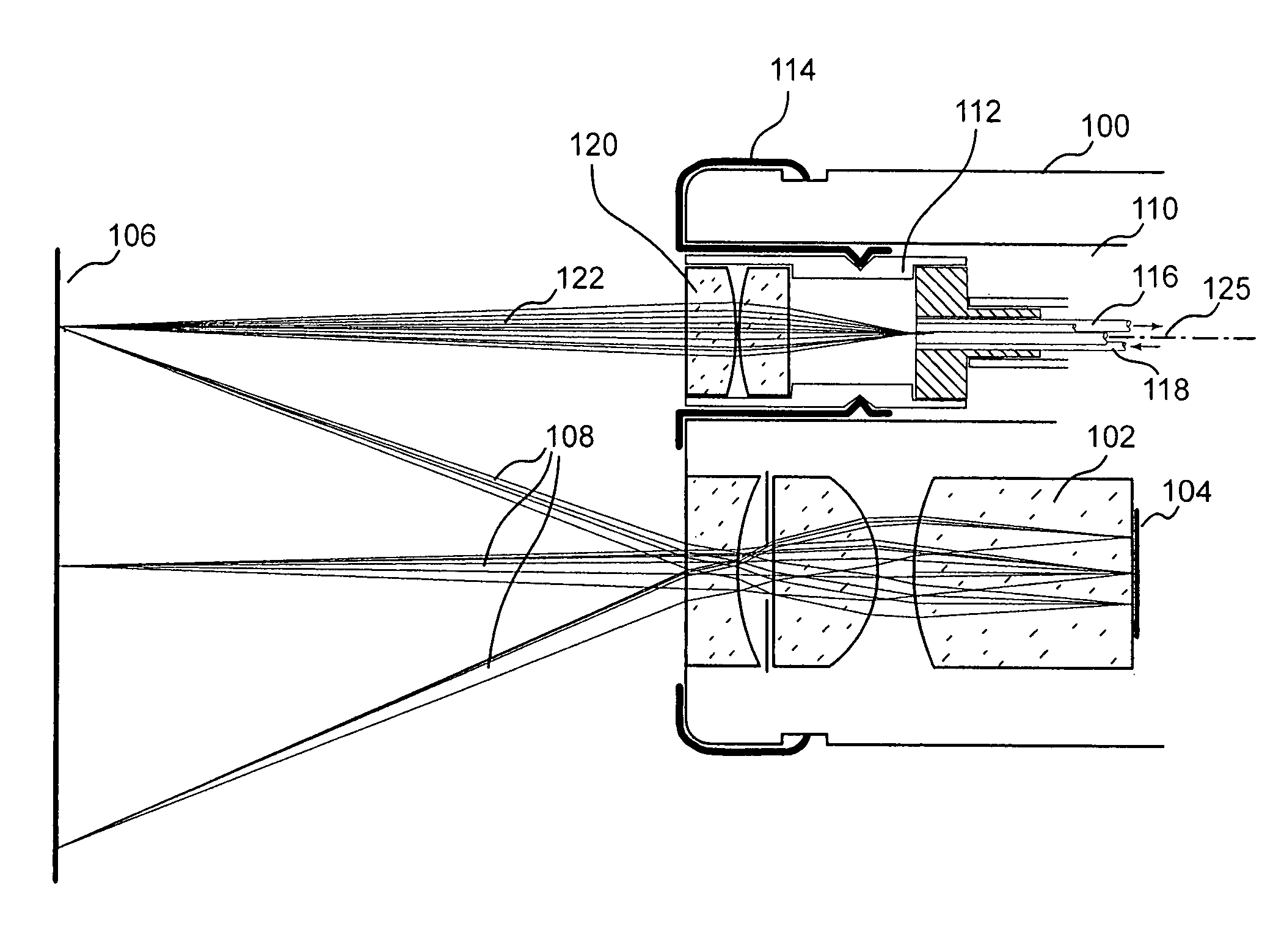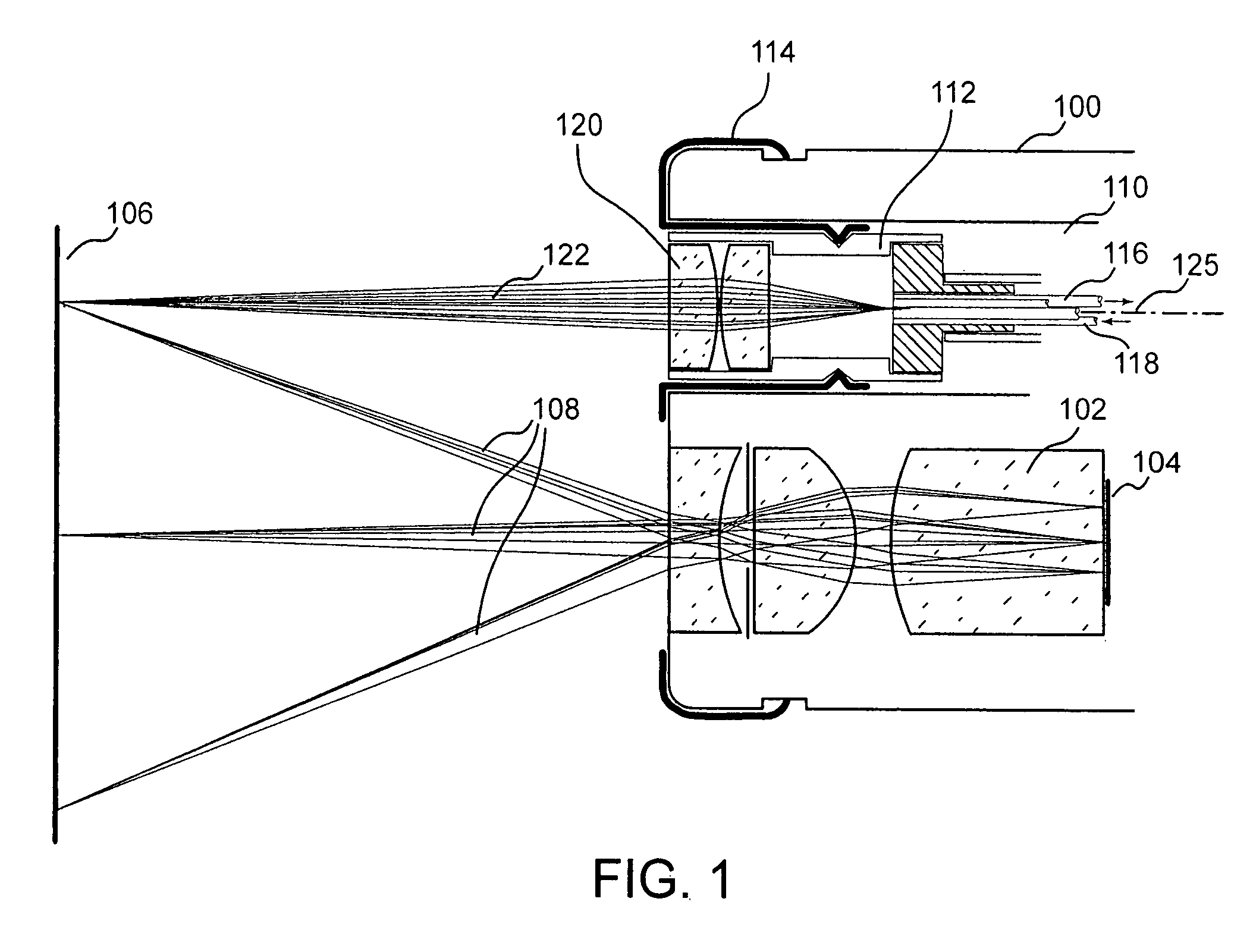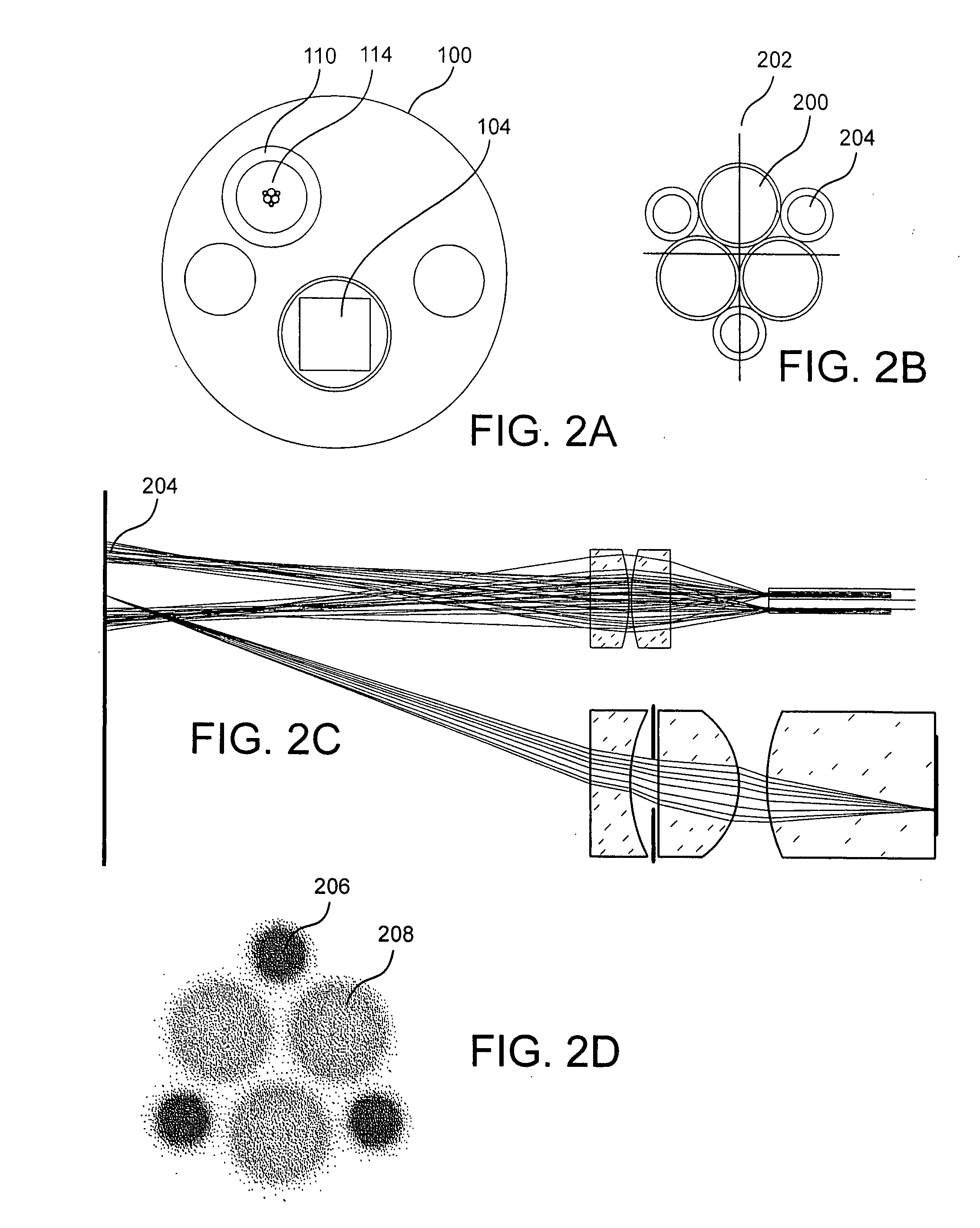Spectroscopically enhanced imaging
a spectroscopic enhancement and imaging technology, applied in the direction of spectroscopy diagnostics, instruments, catheters, etc., can solve the problems of rarely identifying normal tissue as cancerous, unnecessary biopsies, etc., and achieves less expensive, high noise level, and sufficient dispersion
- Summary
- Abstract
- Description
- Claims
- Application Information
AI Technical Summary
Benefits of technology
Problems solved by technology
Method used
Image
Examples
Embodiment Construction
[0038]Autofluorescence endoscope systems to date demonstrate high sensitivity for the detection of cancerous or precancerous lesions. These areas are indicated by a reduction in the level of tissue autofluorescence. Visual detection of such regions is straightforward but often results in false positive readings since there are benign conditions which can cause the same effect. A method which results in a high number of false positive readings is described as one with low specificity. To improve the specificity of autofluorescence endoscopy additional information beyond a visual assessment of the reduction in fluorescence intensity can be taken. Spectral information, resulting from the dispersion or filtering of the intrinsic fluorescence and / or white light reflected from the tissue has been shown to be effective at diagnosing cancerous tissue. Similarly, information available from measurements of light scattering in the tissue can be used to classify tissue types and measure the con...
PUM
 Login to View More
Login to View More Abstract
Description
Claims
Application Information
 Login to View More
Login to View More - R&D
- Intellectual Property
- Life Sciences
- Materials
- Tech Scout
- Unparalleled Data Quality
- Higher Quality Content
- 60% Fewer Hallucinations
Browse by: Latest US Patents, China's latest patents, Technical Efficacy Thesaurus, Application Domain, Technology Topic, Popular Technical Reports.
© 2025 PatSnap. All rights reserved.Legal|Privacy policy|Modern Slavery Act Transparency Statement|Sitemap|About US| Contact US: help@patsnap.com



